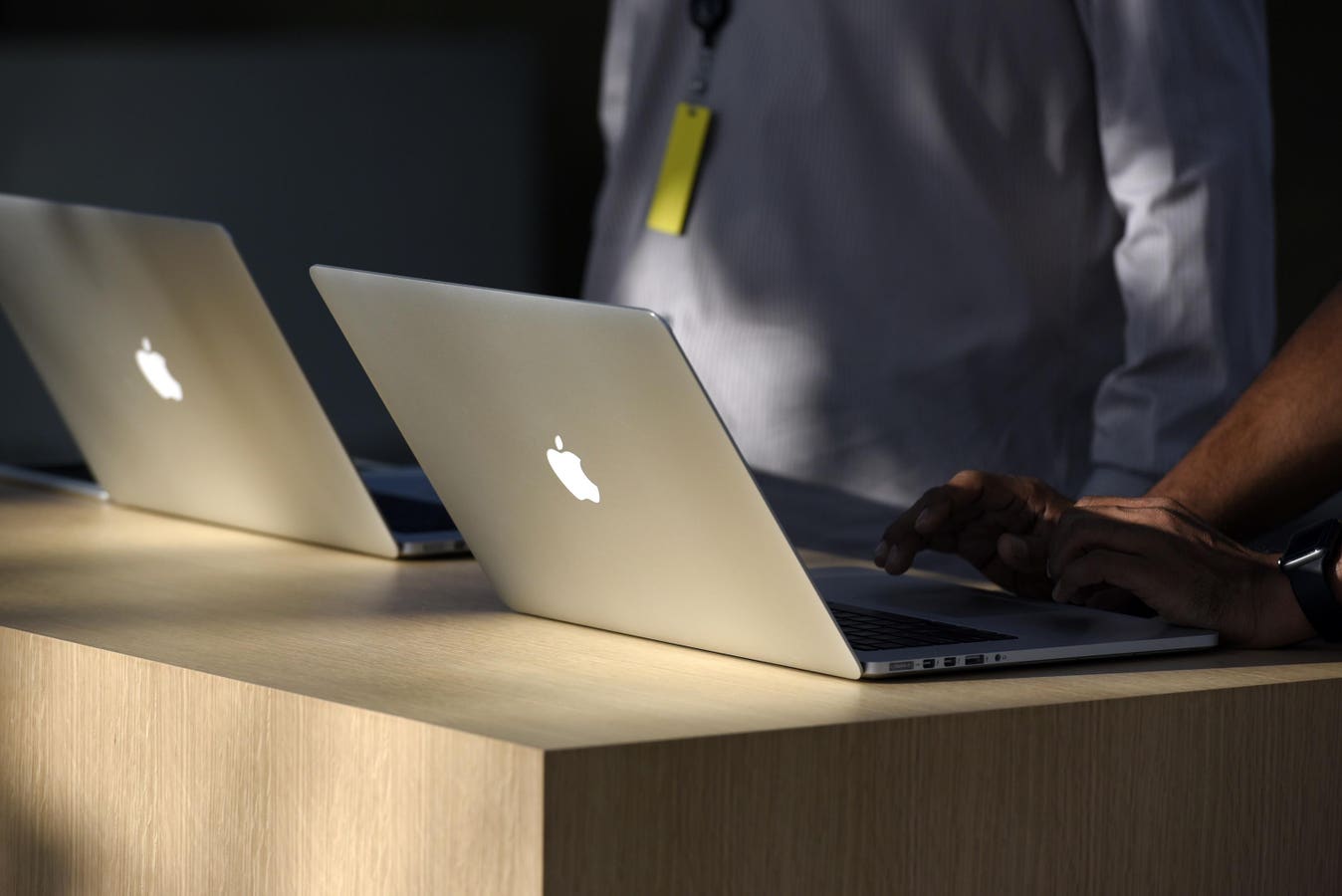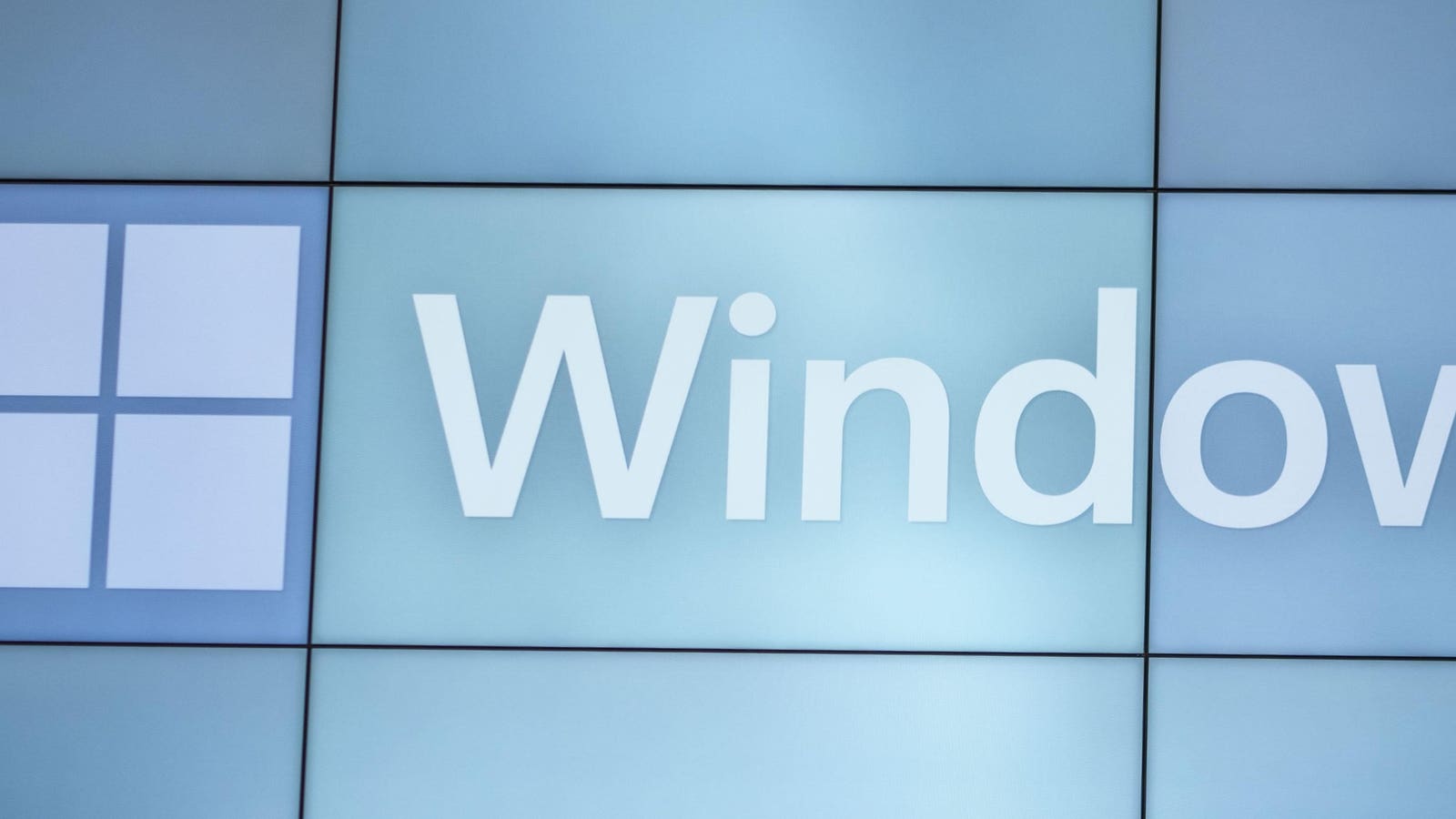Employees use Apple Inc. MacBook laptop at the Steve Jobs Theatre in Cupertino, California … More
While Apple prepares the new M5 chipset, which will result in a significant leap in power and performance for the MacBook Pro, many Mac fans are looking at the other end of the portfolio. Tim Cook and his team are reportedly working on a new MacBook powered by the heart of an iPhone. Will Apple finally release a MacBook that will be priced to undercut the Windows laptop market while still offering the mystique of Apple?
The iPad Pro has already led the chipset-switch way, with a move to offering some models with an M-Series desktop-class chipset in Oct. 2022. There’s a certain symmetry in moving the other way and bringing out a MacBook using the lower-specced A-Series chipset to power a new class of macOS laptop.
MacBook Design And Performance
Although the upcoming A18 Pro chipset was not announced at Apple’s Worldwide Developer Conference 2025, it will be at the heart of the upcoming iPhone 17 Pro and iPhone 17 Pro Max, with a rumored 6-core CPU and 6-core GPU built on TSMC’s 3nm process. Recent benchmark numbers suggest that the A18 Pro will have a performance that sits between the M1 and M2 chipsets; more than enough for an entry-level MacBook suitable for productivity, web browsing, and light media creation.
Long-time Mac fans will recall the 12-inch MacBook, launched by Apple in 2015 and discontinued in 2019. This pairing also featured a low-spec chip with a slim laptop form factor, although it was hindered by relying on the Intel x86 architecture. The ARM-based A18 Pro will deliver significantly more performance, with improved battery endurance and reduced heat.
It is expected to be a 13-inch model, equal in terms of size and style to the MacBook Air, with its fanless design and slim profile. I’d expect some other cost-cutting choices, such as USB-C rather than Thunderbolt, the loss of MagSafe charging, and a lower-specced display—potentially sticking with LCD while the rest of the MacBook range moves to OLED.
MacBook Pricing
The classic school of thought is that Apple does not sell its laptops under the $999 barrier, so any new MacBook is going to start at that price, which potentially allows the MacBook Air and MacBook Pro to carry a higher price as the portfolio separates to a classic good/better/best combination.
Yet this overlooks at least three areas where Apple will undercut that price. The refurbished corner of the Apple Store features reconditioned MacBook Air models priced under $999. Those who have access to an educational discount can see a $100 discount, bringing the price of an entry-level model down to $899.
Finally, you have Apple’s quiet partnership with Walmart, which allows the retailer to sell brand-new MacBook Air M1 models at an exclusive price of just $650.
If the circumstances are right, Apple will drop under the thousand-dollar mark. The question will be how aggressive Apple wants to be. The Walmart deal will have given it significant data on consumers and their expectations of Apple at that price, which will likely inform the decision on an A18 MacBook. Apple will also want to balance its brand. Somewhere between $699 and $899 feels likely.
Should You Wait For This New MacBook
Apple’s Mac portfolio does not follow the strict annual schedule that the iPhone has. While many were expecting new Macs with the M5 chipset to arrive in October, indications suggest that, regardless of a launch event, the latest MacBook Pro models will not be released until early 2026. The same is true of this new A18 Pro-powered MacBook, with a launch in the first half of 2026 being discussed.
That means the new low-cost MacBook may not arrive for another ten to twelve months. There appears to be a gap in Apple’s portfolio for a machine that strikes a balance between lower cost and performance. If it were due to arrive in three months, there would undoubtedly be a strong argument to hold off until October to see the complete package.
Those who need to upgrade soon or are looking to make the jump to macOS should still consider the current MacBook Air. With its M3 chipset, it offers more power than the A18 Pro, and while it may end up being $100-$200 more expensive, that’s an add-on of only $20 per month until the A18 MacBook arrives.
Now read the latest iPhone, iPad and MacBook news in Forbes’ weekly Apple Loop news digest…









